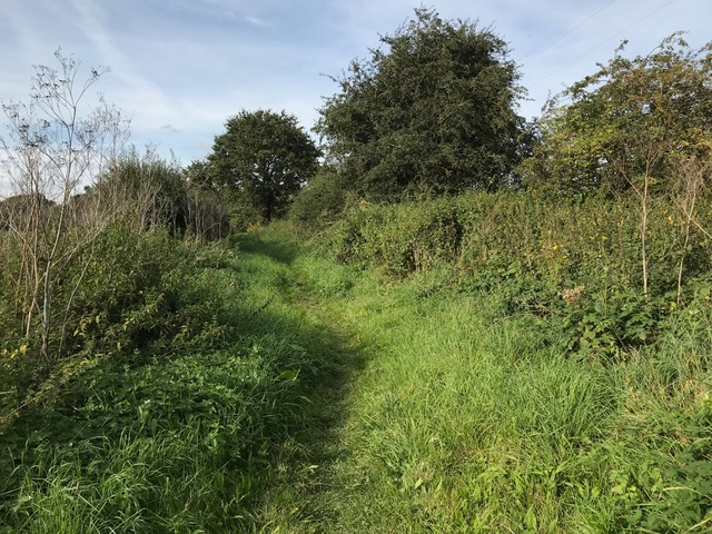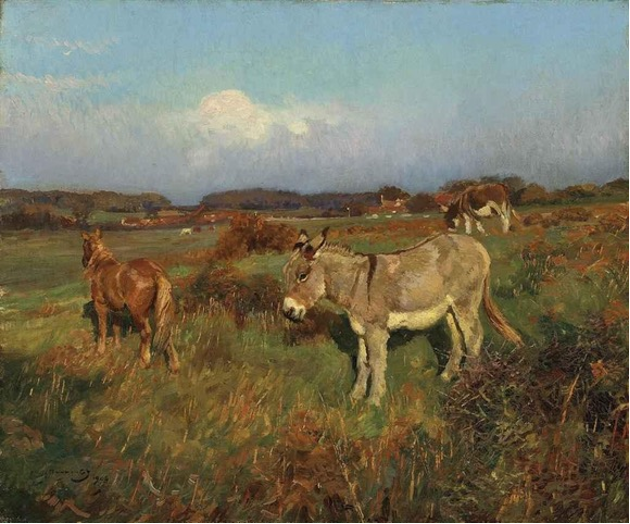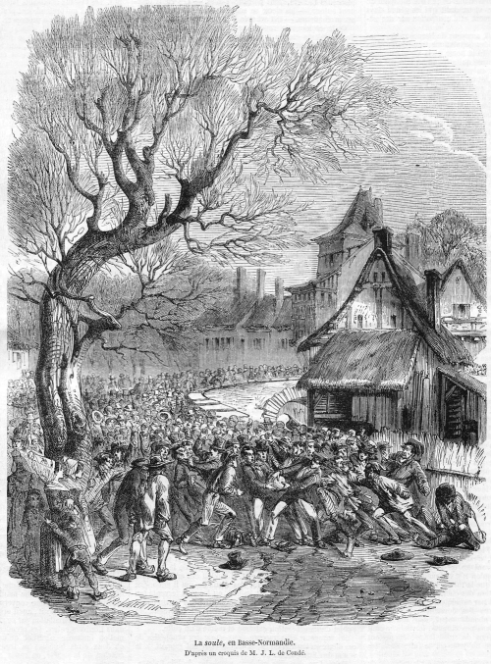With the football season upon us, if it ever really went away, I thought it time to introduce you to the East Anglian sport of camping. Aka ‘Camp Ball’, ’Campyon’, or ‘Campan’ (Anglo-Saxon meaning to fight) from which is derived the term ‘Champion,’ it denotes a game similar to a mix of football and rugby, played on pitches of varying sizes between two teams. Little known today, it dates from the Middle Ages or possibly earlier; a definition of Camp Ball appears in a c15 English-Latin dictionary, Promptorium Parvulorum.
From a report in the Norfolk Chronicle of 1806, we know that matches took place locally on Crostwick Common, the writer noting that it was, ‘nearly twenty years since a regular Camp was played at Crostwick.’ It should be noted that Crostwick Common then was much more open, as shown by two paintings by Sir Alfred Munnings, for whom it was a favourite spot. The article, though regretting that the match, between Taverham Hundred (of which Crostwick and Horstead were a part) did not take place because their opponents, Blofield, did not turn up, nevertheless gives details of how the match was to be played. Whilst rules appeared to be agreed on an ad hoc basis, in general matches were played for about 40 minutes between teams of 10 or 12 men ‘under 25 and unmarried,’ for a ‘hat,’ in the case of the Crostwick match worth half a guinea (the equivalent of 3 days’ wages for a skilled craftsman) for each victorious player. Other prizes awarded could be gloves or shoes.
The aim as in modern football, was to score by putting the ball in the opponent’s goal, but in Camping the ball could be carried, thrown or kicked. There was no such thing as a foul of course. The goals were not described in detail and were probably temporary in nature, simply consisting of a wooden post, or even, as in playground matches of today, thrown off clothing. Each team chose its own goalkeeper and sidesmen to ensure fair play. ‘Handing up’ involved choosing the contestants and ‘throwing off,’ marked the start of play.
It was a rough contact sport and injuries, even deaths were reported. At Ketteringham, for example, a contestant was killed by his opponent tripping and falling on him. It was common for the match to turn into a free-for-all fight or a wrestling match, which might end in bloody noses or worse. Often pre-arranged boxing or wrestling matches were part of the day’s sport.
Matches were watched by large crowds and usually took place on weekday evenings, the concept of a week-end being new. In a match between Norfolk and Suffolk in 1818 spectators ‘amounted to some thousands amongst whom were many gentlemen of rank and fortune,’ yet, according to Dymond, the game was often criticised by the clergy and magistrates. The same source tells us that in the late c18 William Windham III of Felbrigg (‘Fighting Windham,’ famously sent down from Eton’) and his agent William Cobb organised matches in the park and at least once the match was accompanied by horse racing. Lord Rochford similarly organised matches at Eaton. At Ranworth, where many matches were held, it was reported that the road was blocked by, ‘a thick succession of carts, chaises, waggons and caravans among which were seen …crowds of horsemen and pedestrians.’ The camping ground had to be roped in and about 30 waggons placed around the outside to control the crowds. Although contests were usually between parishes, towns or Hundreds, in Norwich teams were also drawn from particular occupations such as weavers or grocers.
From the dearth of newspaper reports after the mid 19th century, it appears that Camping had fallen out of favour, possibly because it was too unruly or because of the advent of the Football Association, formed in 1863, to standardise rules and publish ‘The Laws of the Game,’ which became known popularly as ‘Soccer.’ Two of the ’Cambridge Rules’ which allowed ball-carrying and wrestling the ball from your opponent, were also dropped and evolved into rules of Rugby Football.
Sources:
Newspaper reports from
The Norfolk Chronicle: May 1777, July 1806, June 1818, June, July, August & September 1822, September 1831, October 1832.
Bury and Norwich Post: October 1793, August 1822.
Other:
Dymond, D. ‘The Game of Camping in Eastern England.’ British Association for Local History. 2021.
Ketton-Cremer. R. W. ‘Camping – A Forgotten Norfolk Game’. Norfolk Archaeology Vol.25. (1932) Pp 88-72

1: Crostwick Common Today. Now bisected by the B1150 it was once open grazing. (Picture The Author).

2: Crostwick Common in the early c19 as painted by Munnings. Much more open. Picture © Artchive.

3: A similar game, La Soule, was known in France from the c12. This illustration is of a game played in Normandy in 1852. Source: Wikipedia.
